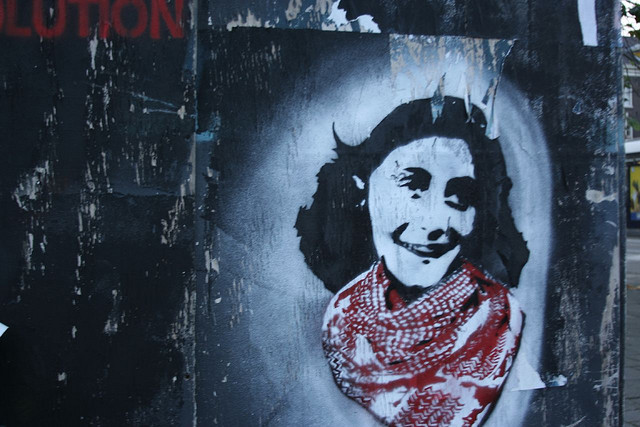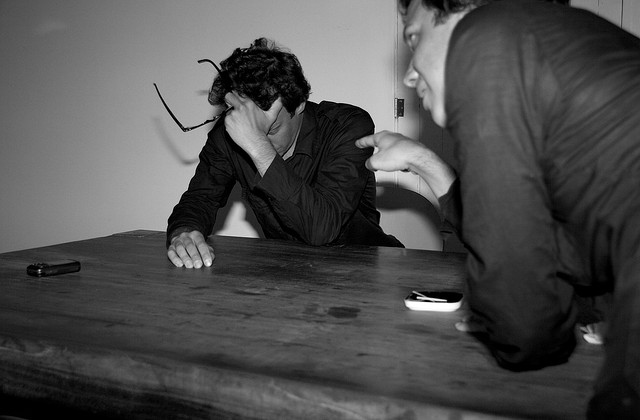
Source: Anne Frank, Andrew Lament, Flickr
In literature, conflict is the struggle between people or forces. This struggle or opposition creates action important to the plot of the story. Therefore, you could say that conflict is the heart of a story. Good stories can have multiple conflicts as in the dramatic adaptation of The Diary of Anne Frank, a diary kept by a young Jewish girl who is hiding from Nazi persecution.

Source: People in peace and at war, KVDP, Wikimedia
The story begins with Anne describing the conflict between the Jews and the Nazis.
ANNE: You could not do this and you could not do that. They forced Father out of his business. We had to wear yellow stars. I had to turn in my bike.
We also learn about the conflict between the families who are in hiding together.
DUSSEL: Every night she twists and turns. I don’t sleep. I spend half my night shushing her. And now it’s nightmares!
And if that isn’t enough, there is conflict between generations.
[Peter’s father] pushes PETER roughly away. In his anger against his father PETER grabs a chair as if to hit him with it, then puts it down, burying his face in his hands. MRS. FRANK begins to pray softly.
Conflicts can be classified as either external or internal.
External conflict is defined as a struggle between a character and an outside force such as another character (character vs. character), a force of nature (character vs. nature), or a group of people in society (character vs. society). As an eighth grader, you may have faced the following external conflicts in your own life:
- Have you ever had a fight with a good friend? (character vs. character)
- Have you ever had a game cancelled because of the rain? (character vs. nature)
- Have you ever been told that you can’t do something, like ride a roller coaster, because you’re too young or too small? (character vs. society)

Source: Internal Conflict, Simon de Bakker, Flickr
An internal conflict is a struggle that takes place within a character’s mind when he or she wrestles with feelings, choices, or difficult thoughts. Perhaps you’ve struggled while deciding whether to go to the movies or to study for your big algebra test. You know you won’t do well on the test if you don’t study, but you also don’t want to miss having fun with your friends. In stories, we call this type of internal conflict character vs. self.
Now, try to identify some types of conflicts on your own. First, read each scenario below. Then, use the right and left arrows to click through the possible answers. Stop on the choice that identifies the type of conflict in the scenario, then click "Submit Answer" to see if you are correct.

The scenarios may have helped you realize how common different types of conflicts are. In the next section, you will see how these conflicts work with the plot of a story.